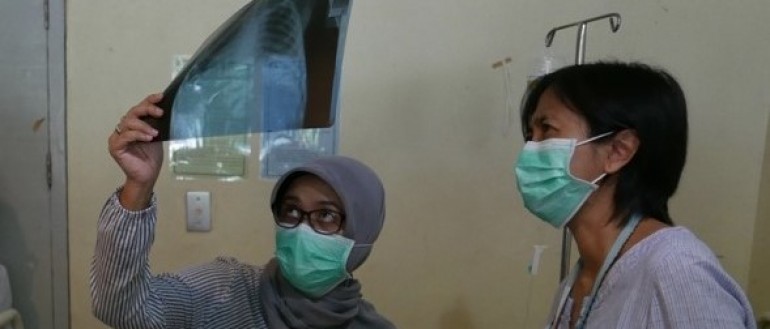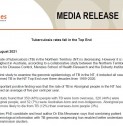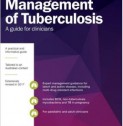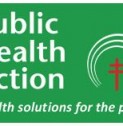Tuberculosis (TB) is a disease caused by the bacteria Mycobacterium tuberculosis. TB most often affects people’s lungs, making them sick with symptoms like cough, fever, and weight loss. TB spreads through the air when people with TB disease in their lungs cough, sneeze or speak, and other people breathe in the TB bacteria.
TB is preventable, treatable, and curable. Yet, if untreated it can cause severe disease, disability, and death. Every year, around 10 million people become sick with TB and around 1.5 million people die from it, making it one of the world’s leading infectious causes of death.
TB is present all around the world, including in Australia. Yet, the burden of TB tends to be greatest in low and middle-income countries. This can be due to factors such as, poor access to health services, crowded living conditions, and undernutrition which increase the risk of TB spreading and making people sick.
Menzies works to address TB in Northern Australia and in our regional neighbours. Our location in Darwin places Menzies at the junction between the Western Pacific and South-East Asian Regions, which combined, account for around two-thirds of the global burden of TB.
The Menzies TB Research Program works with partners in Northern Australia, Indonesia, Malaysia and Timor-Leste to end the TB epidemic through implementation research and health system strengthening.
Our research focus:
- Measuring the burden of TB in Timor-Leste
- Supporting the diagnosis and treatment of drug-resistant TB in Mimika, Indonesia.
- Improving the rollout of TB active case finding activities and use of TB preventive treatment.
- Using genomic methods to improve our understanding of the epidemiology of drug-sensitive and drug-resistant TB in Australia and the region.
- Supporting health system strengthening for TB management through continuous quality improvement and better use of data.
- Co-designing strategies and models to improve screening, diagnosis, treatment, and prevention of TB in Aboriginal communities in remote Northern Australia.
Our research impact:
- The National TB Prevalence Survey of Timor-Leste, a collaboration between Menzies and the Timor-Leste Ministry of Health, has screened over 15,000 people across the country and is providing new insights into the burden of TB in Timor-Leste.
- Mimika District in Central Papua, Indonesia, where Menzies has provided long-standing support, has become one of the highest performing districts for TB case finding in Indonesia.
- Menzies has supported the implementation of a new shorter regimen (known as 3HP) for treatment of latent TB infection in the Northern Territory. This safe and effective regimen reduces treatment duration from nine months to 12 weeks, helping to improve treatment uptake and completion.
Menzies:
- Professor Anna Ralph
- Dr Chris Lowbridge
- Associate Professor Josh Francis
- Dr Jennifer Yan
- Rofina Gusmao Dos Santo
- Enco Da Costa Ico
- Aurora Fernandes
Honorary Fellows:
- Dr Ella Meumann
- Dr Michelle Goroh
Students:
- Dr Trisasi Lestari – PhD, Charles Darwin University
- Yuko Matsuoka – PhD, Charles Darwin University
- Yao Long Lew – PhD, Charles Darwin University
- Dr Emma Smith – PhD, Charles Darwin University
Regional Research Champions:
- Dr Rina Triasih – Universitas Gadjah Mada (UGM), Indonesia
- Dr Wong Ke Juin – Likas Hospital, Malaysia
Collaborators:
- Papuan Health and Community Development Foundation (YPKMP), Indonesia
- Universitas Gadjah Mada (UGM), Indonesia
- Burnet Institute, Australia
- Infectious Disease Society Kota Kinabalu, Malaysia
- Northern Territory Centre for Disease Control, Australia
- Sunrise Aboriginal Health Service, Australia
- Mala’la Aboriginal Health Service, Australia
Current Projects:
- Shorter Treatment Regimens for TB infection in the NT
- National TB Prevalence Survey of Timor-Leste
- Remote Aboriginal Communities Ending TB (REACT)
- Papua New Guinea & Indonesia for the Micro Elimination of TB (PRIME-TB)
Past Projects:
-
Ralph, A.P., Rashid Ali, M.R.S., William, T., Piera, K., Parameswaran, U., Bird, E., Wilkes, C.S., Lee, W.K., Yeo, T.W., Anstey, N.M. (2017), Vitamin D and activated vitamin D in tuberculosis in equatorial Malaysia: a prospective clinical study, BMC Infect Dis. 17(1):312. doi: 10.1186/s12879-017-2314-z.
-
Lee, H.G., William, T., Menon, J., Ralph, A.P., Ooi, E.E., Hou, Y., Sessions, O., Yeo, T.W. (2016), Tuberculous meningitis is a major cause of mortality and morbidity in adults with central nervous system infections in Kota Kinabalu, Sabah, Malaysia: an observational study, BMC Infect Dis. 16:296. doi: 10.1186/s12879-016-1640-x.
-
Pollett, S., Banner, P., O'Sullivan, M.V., Ralph, A.P. (2016), Epidemiology, Diagnosis and Management of Extra-Pulmonary Tuberculosis in a Low-Prevalence Country: A Four Year Retrospective Study in an Australian Tertiary Infectious Diseases Unit, PLoS One. 11(3):e0149372. doi: 10.1371/journal.pone.0149372. eCollection 2016.
-
Muhammad Redzwan, S.R., Ralph, A.P., Sivaraman Kannan, K.K., William, T. (2015), Individualised second line anti-tuberculous therapy for an extensively resistant pulmonary tuberculosis (XDR PTB) in East Malaysia.,Med J Malaysia. 70(3):200-4.
-
Rashid Ali, M.R., Parameswaran, U., William, T., Bird, E., Wilkes, C.S., Lee, W.K., Yeo, T.W., Anstey, N.M., Ralph, A.P. (2015) A prospective study of mycobacterial viability in refrigerated, unpreserved sputum batched for up to 8 weeks, Int J Tuberc Lung Dis. 19(5):620-1. doi: 10.5588/ijtld.14.0938.
-
Rashid Ali, M.R., Parameswaran, U., William, T., Bird, E., Wilkes, C.S., Lee, W.K., Yeo, T.W., Anstey, N.M., Ralph, A.P. (2015), A prospective study of tuberculosis drug susceptibility in sabah, malaysia, and an algorithm for management of isoniazid resistance, J Trop Med. 2015:261925. doi: 10.1155/2015/261925. Epub 2015 Mar 9.
-
William, T., Parameswaran, U., Lee, W.K., Yeo, T.W., Anstey, N.M., Ralph, A.P. (2015), Pulmonary tuberculosis in outpatients in Sabah, Malaysia: advanced disease but low incidence of HIV co-infection, BMC Infect Dis. 15:32. doi: 10.1186/s12879-015-0758-6.
-
Ralph, A.P., Kenangalem, E., Waramori, G., Pontororing, G.J., Sandjaja, Tjitra, E., Maguire, G.P., Kelly, P.M., Anstey, N.M. (2013) High morbidity during treatment and residual pulmonary disability in pulmonary tuberculosis: under-recognised phenomena, PLoS One. 8(11):e80302. doi: 10.1371/journal.pone.0080302. eCollection 2013.
-
Ralph, A.P., Lucas, R.M. (2013), Vitamin D and tuberculosis: hope or hype?, Med J Aust. 199(10):648-9.
-
Kenangalem, E., Waramori, G., Pontororing, G.J., Sandjaja, Tjitra, E., Maguire, G., Kelly, P.M., Anstey, N.M., Ralph, A.P., (2013), Tuberculosis outcomes in Papua, Indonesia: the relationship with different body mass index characteristics between papuan and non-Papuan ethnic groups, PLoS One. 8(9):e76077. doi: 10.1371/journal.pone.0076077. eCollection 2013.
Click here to view more tuberculosis publications in PubMed.
-
Tuberculosis rates fall in the Top End
The rate of tuberculosis (TB) in the Northern Territory (NT) is decreasing. However it is still the highest in Australia, according to a collaborative study between the Northern Territory Centre for Disease Control, Menzies School of Health Research and the Doherty Institute.
-
History of tuberculosis control in Australia
This case study focuses on the role played by NHMRC and Australian governments in the virtual eradication of tuberculosis in Australia during the 20th century.
-
Management of Tuberculosis: a guide for clinicians
The TB Forum has published "Management of Tuberculosis", edited and composed by many of the TB-CRE's key investigators. Including Menzies Associate Professor Anna Ralph
-
How we can end TB by 2030
A regional research collaboration with the Menzies School of Health Research has been highly productive in building capacity in PNG and Indonesia,.
-
Tuberculosis services in PNG in the journal Public Health Action.
A major output from the Tropical Disease Research Regional Collaborative Initiative between Menzies School of Health Research and the Burnet Institute was launched last week at the Papua New Guinea (PNG) Annual Medical Symposium in Port Moresby. A series of papers have been published by PNG health workers who provide tuberculosis services in PNG in a special supplement in the journal Public Health Action.
-
Supporting TB health systems
This research was conducted as part of several initiatives led by a Menzies-Burnet regional consortium in partnership with institutions in Indonesia and PNG.
-
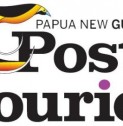
PNG-Aust researchers to combine under new grant program
Australian and Papua New Guinean research groups will work in partnership to address malaria, tuberculosis and other health security threats, under a new grants program funded by the Australian government.
-

Australian support for eliminating malaria and health research in the Indo-Pacific
Australia is playing a leading role in supporting malaria elimination efforts, particularly in the Indo-Pacific. The Government's Stronger Systems for Health Security program is supporting practical, relevant research into fundamental health security challenges.
-
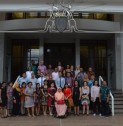
Tuberculosis elimination course for Indonesian health workers
Menzies is collaborating with the Burnet Institute to deliver training in the prevention and eradication of tuberculosis (TB) to 25 visiting Indonesian health professionals.
-

Tuberculosis, Why haven’t we eliminated TB already?
Tuberculosis - Medical Republic Why haven’t we eliminated TB already?
-

$2m grant to combat drug resistant malaria and tuberculosis
A $2m research grant to work towards the prevention, control and elimination of malaria and tuberculosis (TB) in Southeast Asia and the Pacific has been awarded to a consortium led by Menzies School of Health Research, in collaboration with Burnet Institute, the Department of Foreign Affairs and Trade announced today.
-

Tuberculosis remains a worry in Australia despite low disease rates, experts warn
Health experts have urged people most at risk of tuberculosis to be tested, in order to help keep the killer disease at bay in Australia.
-

The Conversation: Lung gas holds clue for future tuberculosis treatment
Australian researchers have uncovered a link between low levels of the gas nitric oxide in the lungs of tuberculosis patients and the body’s ability to fight the deadly disease, opening the door to potential new treatments.
-

Journal of Infectious Diseases: Impaired Pulmonary Nitric Oxide Bioavailability in Pulmonary Tuberculosis
Impaired Pulmonary Nitric Oxide Bioavailability in Pulmonary Tuberculosis: Association with Disease Severity and Delayed Mycobacterial Clearance with Treatment.
-

Disease of the month: tuberculosis
With a history as long as mankind’s, TB lies dormant in one third of our global population.

